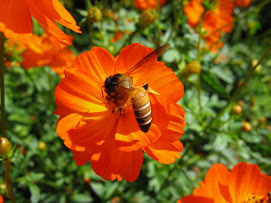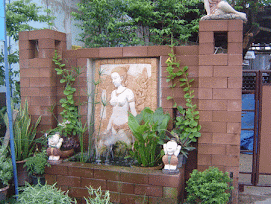Happiness - The Gardening of the Soul
Copyright © 2005 Julian Kalmar
"Happiness actions" are the physical and mental actions that naturally and automatically create a sense of well-being in us. They work because there is a certain something within us—our internal wiring—that responds to these actions. Although there is some variation between people, many happiness actions are shared with just about everyone. For example, most people will feel good after doing physical exercise. Likewise, the mental activity of learning a new skill can be tremendously gratifying. The most powerful happiness actions involve both mental and physical activities, and have astounding personal effects. Gardening is an excellent example. Providing it’s not overly strenuous, quietly tending a garden can create an enormous sense of tranquility. You get in touch with the soil and plants, and most importantly, your own thoughts. To get your hands in good soil, quickly puts you in communion with nature. There is nothing like filling a pot with soil, and patting it down with your hands. Making a little hole, putting a seed in it, and covering it over, brings an excited sense of anticipation. The magic of a little water and some time brings forth new life in a way that never gets old. Every day thereafter, there are visible changes in your little plant that are captivating. With a larger garden, there is even greater involvement. You quickly become part of the soil and plants. All your stresses melt away, and you lose yourself in the quietude of the experience. (When was the last time you got so carried away?) Suddenly you’ll completely lose awareness of your problems with family, work, or the economy. Your biggest concern becomes, finding the critter responsible for eating the leaves of your tomato plant. Getting lost in “bug hunting” takes you back to earlier days when you were completely in touch with your real life. Then there’s that good tired feeling you get after spending hours in the garden. You sleep more soundly that night, since…you can’t remember when. A day or two later you start discovering muscles you never knew you had! Every movement brings with it an ache that reminds you of your gardening accomplishments and you feel good as you relive your experience communing with the spirit of your garden. Next comes the impossibility of passing by your garden without stopping to admire it. With that comes one of the highest things you can do for your sense of well-being. You bathe in the appreciation of beauty. Is it any wonder that centuries ago it was discovered that people recovering from illness and injury recovered faster if they tended a garden? You cannot help but put something of yourself into the soil, the plants and the environment. As you cultivate your garden, so it cultivates a certain something upon your soul. Indeed, gardening is a spiritual experience. It connects us to the One-ness that is, to the oneness of where we truly are. We lose our I-ness, and unconsciously integrate into the flow of the universe. We fall into perfect harmony and finally arrive home.
About the Author:Julian Kalmar is part of a small think tank dedicated to spreading happiness throughout the world. More happiness teachings are available in his 4-CD audio collection, “Happiness: The Highest Gift.” Julian recently joined the ranks of Nelson Mandela, Wayne Dyer and Marc Allen in winning the coveted "Audio-of-the-month" award. (http://www.thehappinessformula.com)
Thank : http://www.articleworld.net/


